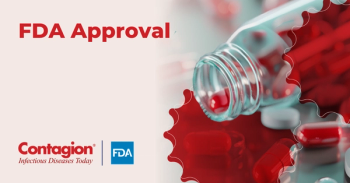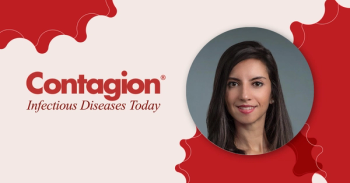
ASM Microbe 2017 Keynote Speaker Brings DNA Sequencing to Space
ASM member Kate Rubins, PhD, first individual to sequence DNA in space, shed light on her experience as a NASA astronaut in a keynote conversation at the ASM Microbe 2017 meeting in New Orleans, Louisiana.
A keynote conversation between American Society for Microbiology (ASM) member Kate Rubins, PhD, National Aeronautics and Space Administration (NASA) astronaut, and Ed Yong, science journalist/author reporting for The Atlantic, was held at the ASM Microbe 2017 meeting, on Saturday, June 3rd, 2017.
Previously, Dr. Rubins was a principal investigator at the Whitehead Institute for Biomedical Research (MIT/Cambridge, Massachusetts) and head of a lab of 14 researchers focused on studying viral diseases related to poxviruses, filoviruses (such as Ebola and Marburg), and arenaviruses (such as Lassa Fever) in addition to working on collaborative projects with the US Army to develop therapies for Ebola and Lassa viruses.
Dr. Rubin pursued her childhood dream of becoming an astronaut when NASA issued a call for applications to the astronaut program; she was accepted in 2009 and became a flight engineer. During her mission to the space station, she conducted 2 space walks and participated in over 250 different experiments. Dr. Rubin was the first individual to sequence DNA in space.
EY: First of all, has anybody else here in the audience been to space? (the audience laughs). So, what’s it like getting ready for going into space?
KR: It’s a heavy suit; it’s got to be airtight. A few hours later, you get the countdown; it’s one of the longest waits of your life. One of the most amazing things is the experience of first docking with the space station. We’ve trained for this before, but never actually experienced zero gravity in space before. The process of getting ready for a spacewalk takes about 12 hours. Prebreathing protocol involving breathing pure oxygen followed by intense exercise to remove nitrogen. This takes several hours to make sure you don’t go through decompression sickness. Then, you float outside the space station. At this point, it’s incredible, because there is nothing beneath you; it’s 250 miles down. It’s hard to do even small things. They train a lot for this in a giant pool. There’s this realization that every piece of equipment costs more than you are ever going to make in your lifetime [as you] float over the space station.
EY: Who decides who gets to do the spacewalk?
KR: Mission control decides and calls us (showing video). There were amazing photos from here. It turns into kind of a sport to take these pictures per request from kids everywhere and other places. You end up seeing this full view of the earth [and[ it gets kind of addictive to be there with your camera taking pictures.
EY: You were a microbiologist by training, but much more is required [and] this requires many disciplines. What is that like?
KR: Absolutely—you are a jack of all trades. You end up being a plumber, an electrician, and more. We’re doing some microscopy, cell culture, and brought a small sequencer. So, we were looking at whether this technology works. These were incredibly exciting experiments. We didn’t know if this was going to work at all. Then we were actually trying sample preps.
(video shows a centrifuge rotor put together with an attachment to a simple drill)
[One of the questions was]: Can you pipette very well on board? The surface tension becomes important for controlling where the fluids stay. We really began to determine whether special pipettes would be needed.
EY: How do you keep everything from floating off?
KR: We put duct tape on everything (audience laughs). It’s amazing how mindful you have to be about every piece of equipment that you touch. So, you have to kind of tape everything. One of my crew mates said that if you have 3 things in your hands in space, you are going to lose one of them. This is true; it’s all about stuff management.
EY: What about re-entry?
KR: We were there for around 115 days. Then we actually fired the engines and began de-orbit. This is the part where we become part of a giant meteor fireball. People talk about launch a lot, but they don’t talk about re-entry, [where] you are going from 17,500 miles per hour to 0 in about 33 minutes. You come screaming through the atmosphere; there is no real video of this part of the entry.
EY: Does it get hot inside?
KR: Yes, it’s not comfortable, but it’s survivable (audience laughs; video shows the landing site in Pakistan). You are really happy to be back on earth at this point.
EY: How do you go from a background in microbiology to becoming an astronaut?
KR: A friend noticed an ad in USAJobs.com and I had always wanted to become an astronaut, so I just thought, ‘Well, why not? I’m not going to procrastinate [with] this,’ and so, I just applied.
EY: How does one prepare for life in space?
KR: There is a lot of simulation training. We don’t have a zero-gravity place, but we do have a giant pool. Part of it is survival training where we are left in various places and left to try to survive for several days. A lot of this is like, okay, this seems horrible at the outset, but then it’s kind of nice when you find that you can do this. We do a lot of flight training and its good, high-pressure training.
EY: Did any of your previous biosafety laboratory work prepare you for this?
KR: Yes, definitely. When you are very aware that you are at extreme risk every minute, it really focuses you.
EY: Do you remember exactly when you were being told that you were going to be an astronaut?
KR: Yes, I was in my office at Whitehead, and I first thought, ‘This is fantastic!’ Then I thought, ‘Oh my god, what am I going to do with my laboratory?’ We have great collaborators, so most of my researchers just moved to other laboratories.
EY: What about power and resources?
KR: We generate all of our power for the space station from solar arrays. You cannot evacuate, so, you really have to be cautious to prevent any possible fire as well. We are in a completely closed loop system. We conserve all of our water—the coffee you have today, is [going] to be the coffee you have tomorrow. All the waste is recycled, filtered, and purified.
EY: What if you get sick in space?
KR: We can treat on-board. We have a limited pharmacy. We are trained to be first responders. Right now, if you have a really bad emergency, you would have to undock and come home, but if you are talking about an exploration mission, then there is no possibility to just come home. So, you want to have that autonomous medical capability.
EY: There has been some work on the microbiome in space, right?
KR: Yes, there has been some work on decompression studies on how they might sense microgravity and whether it does change gene expression and does the lower radiation change. Perhaps we may use engineered microbes [that] may help us with our waste management system.
EY: It seems like the number of potential questions you could ask is vast. How do you decide which ones?
KR: Its’ huge. We only have one laboratory and we are time-limited. Right now, we are committed only to 2024. So, NASA will look at prioritizations, and [attempt] to determine from which experiments can we get the most benefit.
Following the conversation, the audience was then allowed to ask a few questions of their own.
Audience member: How does this benefit us on earth?
KR: Part of it is basic research. Sometimes, we don’t know what the outcome is going to be. We have a new variable with zero gravity, but we also have applied research like questions of bone loss and osteoporosis. We are interested in this bone loss, but also what happens when you rebuild it. I tell you from firsthand experience, you experience some serious neurovestibular disturbances out there. There are cardiac and immune changes as well. I’m really focusing on the human health research, but there is also the question of how [to] keep someone alive for so many years. We [are] working a lot on things like CO2 scrubbing [and] water filtration, and so, there are practical parallels there.
A: Have you ever thought to yourself, ‘I never thought I would be this far in my life.’ Was there a moment where you suddenly felt an imposter syndrome, like, ‘This isn’t me, I can’t get my mind around [this]?’
KR: I think that a lot of the operational training really prepares for this. You feel that when you experience as a researcher: Can I get this grant or can I get this paper? But [when you come] to NASA, that is what is drilled into you. You have to deal with the situation. You are the only one that is going to be there. So, you don’t even know if you are going to be any good at this, but they put you in front of an airplane and you are going to have to solo it in 20 hours. The message [is], you’ve got to leave this self-doubt behind. You can absolutely do it. You can handle anything that’s thrown your way. I am not a particularly capable human being. Let me just disavow this notion right now. I’m fairly ordinary and I’ve been lucky; I’ve been stuck in some interesting situations. If I put you in the seat of a T38 plane, you would learn how to fly as well!
(Audience vigorously applauds.)
W. Todd Penberthy, PhD is a medical writer with over 4 years of experience based in Orlando, Florida. Prior to that Todd was a professor directing biomedical research using zebrafish models of human disease with expertise in orthomolecular niacin-related science for 10 years. He can be reached at WTPENBER@MAC.COM.
Newsletter
Stay ahead of emerging infectious disease threats with expert insights and breaking research. Subscribe now to get updates delivered straight to your inbox.





















































































































































































































































































